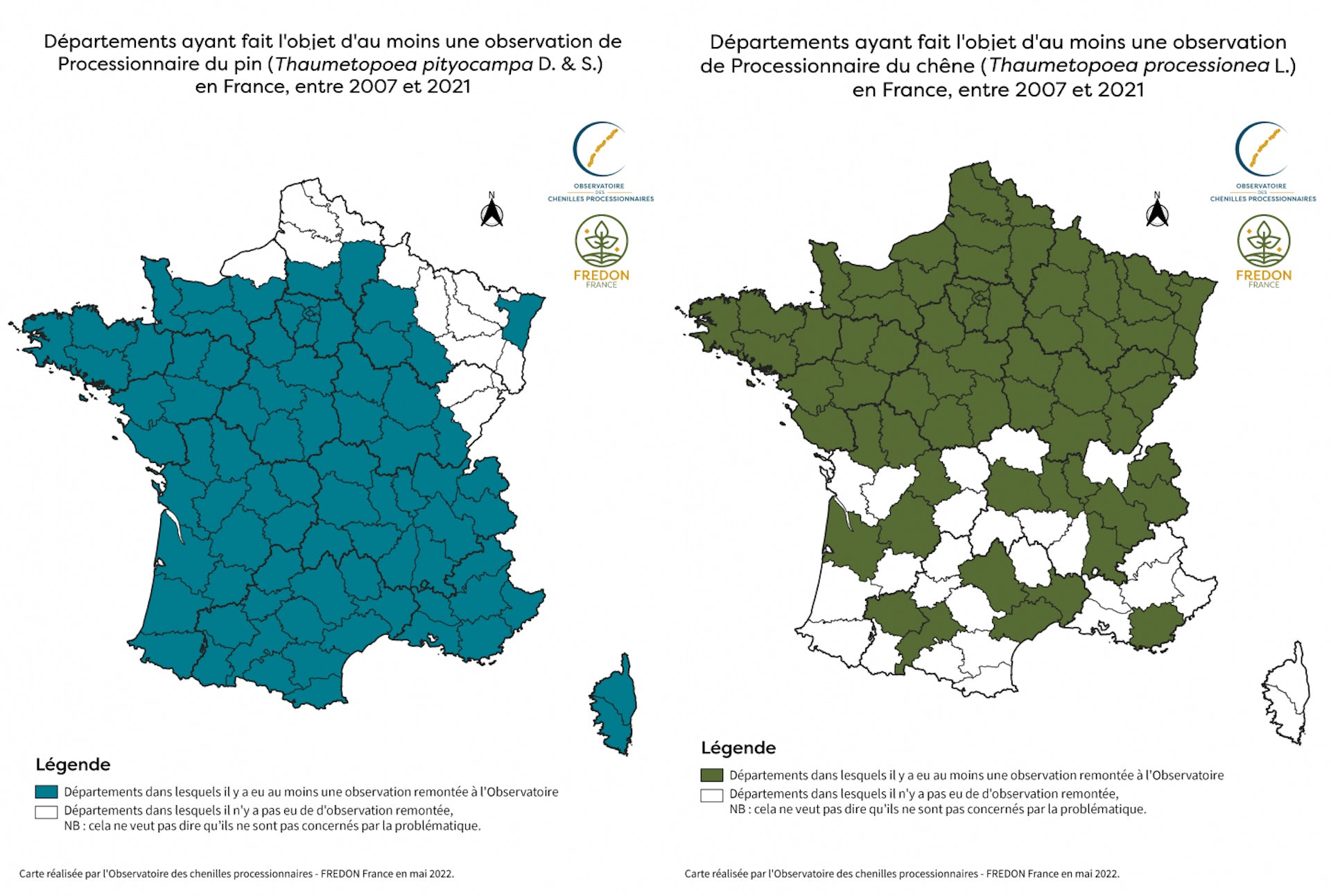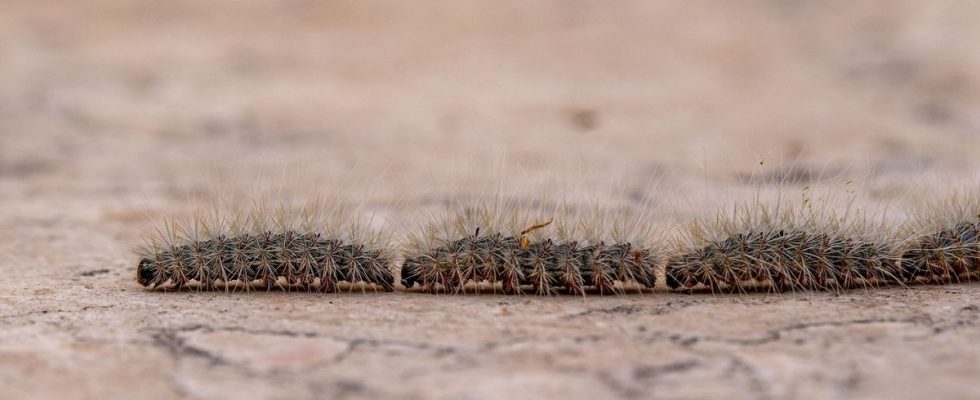Published on
Updated
Reading 3 min.
According to the Processionary Caterpillar Observatory, stinging caterpillars are reported throughout France and expose you and your pets to health risks.
Winter is not over yet they have already started their procession. According to the Processionary Caterpillar Observatory, reports of pine and oak processionary caterpillars are increasing throughout France, sparing no region. Which is not very good news since these species have stinging hairs.are dangerous for humans and domestic animals (dogs, cats, etc.)”. Mistrust.
Which regions are most affected?
Although the period may seem early, it is nevertheless known to the surveillance structures. Thus, the pine processionary moth usually appears between January and April and the oak processionary moth, from April to July.
“But increasingly mild winter temperatures favor the hatching of eggs and the growth of larvae“, notes the National Food Safety Agency (ANSES).
In terms of location, certain departments are more at risk than others from the invasion of processionary caterpillars. But according to the Agency, there is “no longer any department which escapes one or the other of the species, when it is not both which are present“.
Thus, between 2007 and 2022, the pine processionary caterpillar was observed in almost all French metropolitan departments. Only a few departments in Grand Est, Bourgogne-Franche-Comté and Hauts-de-France have not reported anything, which does not mean that they are spared.
As for the oak processionary caterpillar, its presence is more disparate across the territory. And avoid some departments in the southern half. “But the species is swarming more and more” recognizes the Observatory.

What are the known risks?
As ANSES reminds us, a processionary caterpillar does not bite or sting: “Its weapons are some of its hairs, or bristles, which are like microscopic needles or harpoons. These hairs detach themselves very easily from the caterpillar’s body when it feels threatened. Carried by the wind, they can reach their target several tens of meters away.
Stinging hairs contain a toxic protein that is very irritating and inflammatory: thaumetopoein. It penetrates where the “harpoon” is planted: most often in the skin but also in the eye, nose, mouth… The toxin released causes a reaction similar to that of nettle stings: red spots in the form of blisters, itchy red patches appear on the skin. Fortunately the majority of cases are mild (less than 5% present a condition of average severity). But general symptoms can occur in the event of significant exposure. The immune system then goes into overdrive, potentially causing:
The risk is also present in domestic animals: dogs can play with the caterpillars in procession, which can lead to necrosis of the tongue and potentially to the death of the animal, explains ANSES.
According to a report published by the health authority in June 2020, “there were approximately 1,300 symptomatic cases of exposure to processionary caterpillars recorded by the Poison Control Center (CAP) between 2012 and 2019“. Figures which only concern cases reported to poison control centers,”the actual number of people affected is therefore probably much higher“, specifies ANSES.
Fortunately, there are many ways to avoid exposure to caterpillars:
- If you detect a nest, do not touch it but contact professionals who will have the equipment to intervene;
- Be careful around children, who may be tempted to touch the caterpillars and put them in their mouths. Avoid parks or gardens where you have seen affected trees;
- If infested trees are near nearby homes, avoid drying laundry outdoors and be careful when mowing the lawn. Wash fruits and vegetables picked in the area;
- In the forest, to avoid airborne hairs, it is preferable to wear long, covering clothing and to avoid rubbing your eyes during and after returning from a walk.
What to do in case of exposure?
ANSES also reminds us of the correct procedure to follow in the event of exposure and irritation.
- If you think you have been affected, it is recommended to take a shower, rinse well to remove hair and change clothes. You should not rub the lesions to avoid breaking the invisible hairs present;
- In the event of emergency signs (respiratory distress, loss of consciousness, etc.), you must immediately call 15, or 112 or 114 for deaf and hard of hearing people;
- If you have hair in your eye, you should quickly consult an ophthalmologist;
- In case of other symptoms (redness, itching): call a Poison Control Center or consult a doctor. If possible, photograph the caterpillar to help identify the species with certainty;
- For pets, consult a veterinarian or call a veterinary poison control center.
